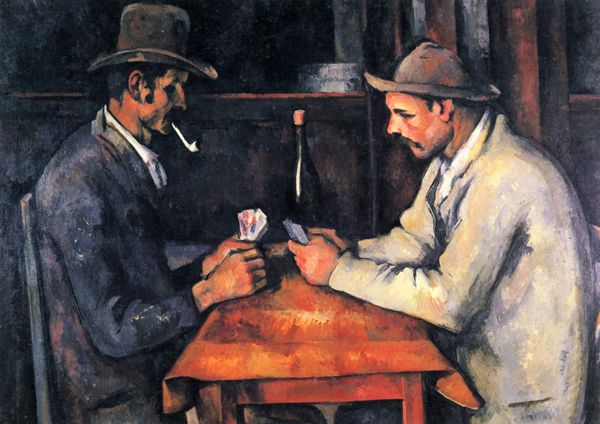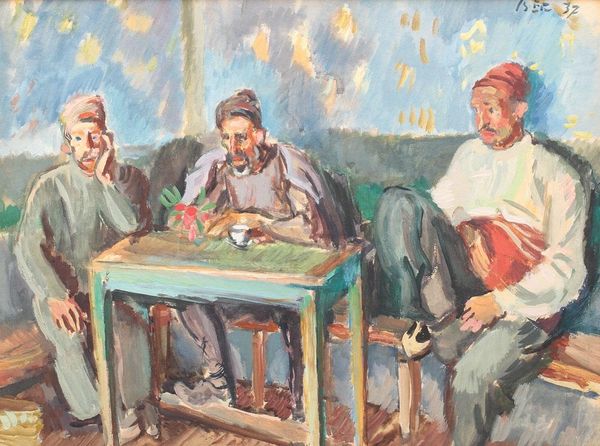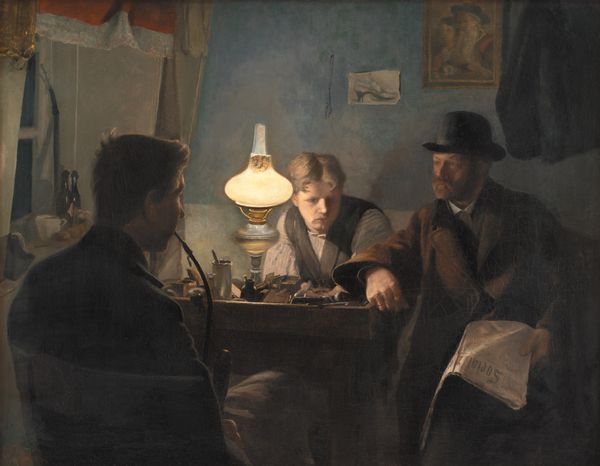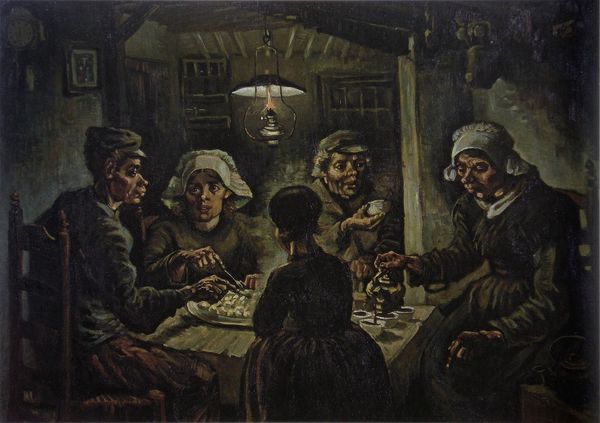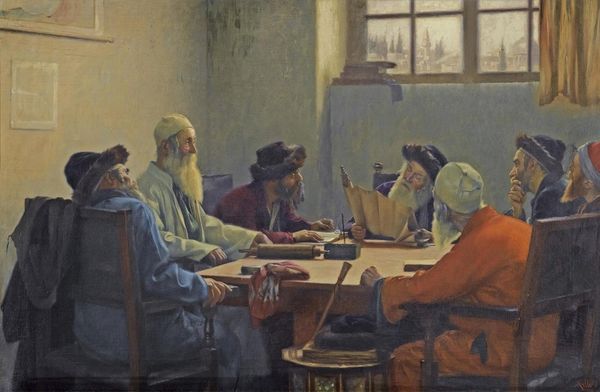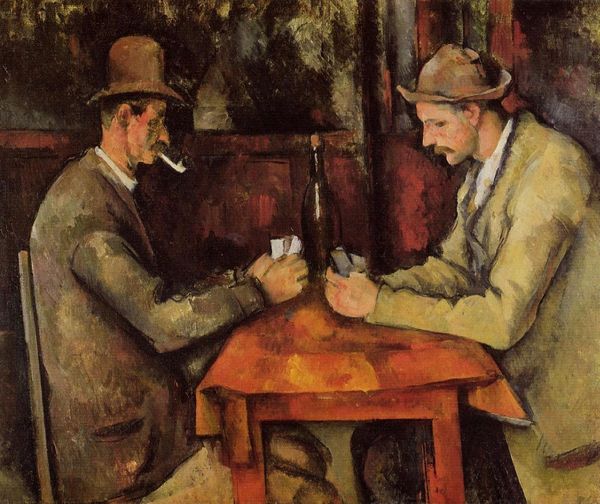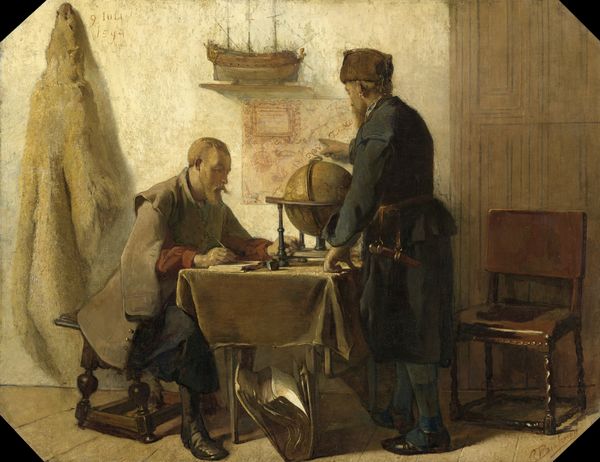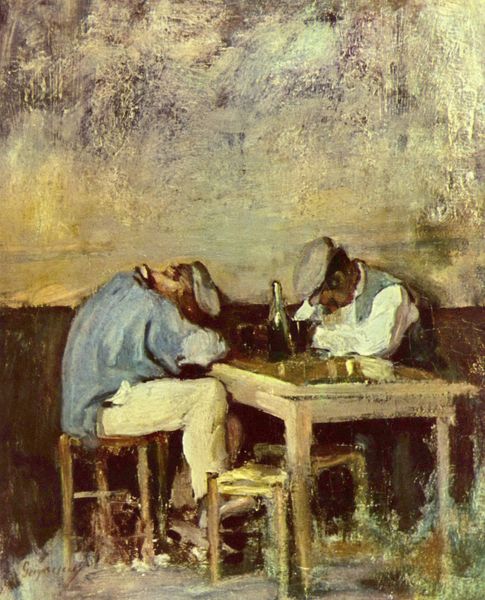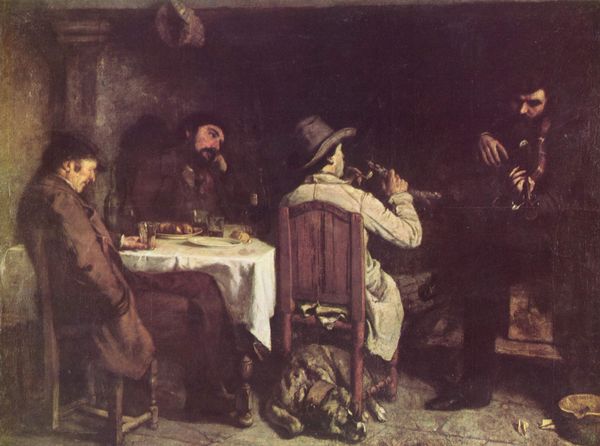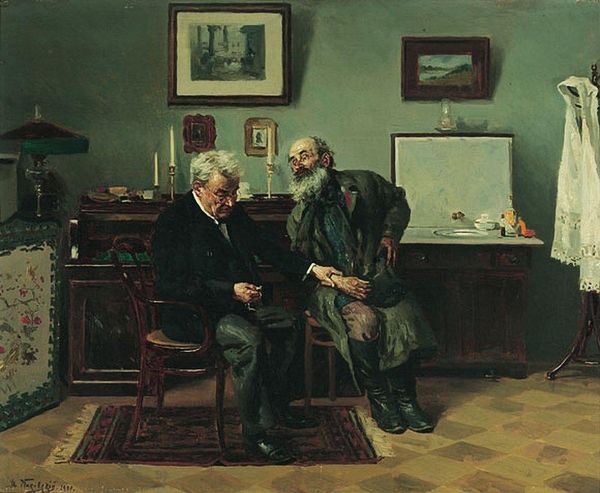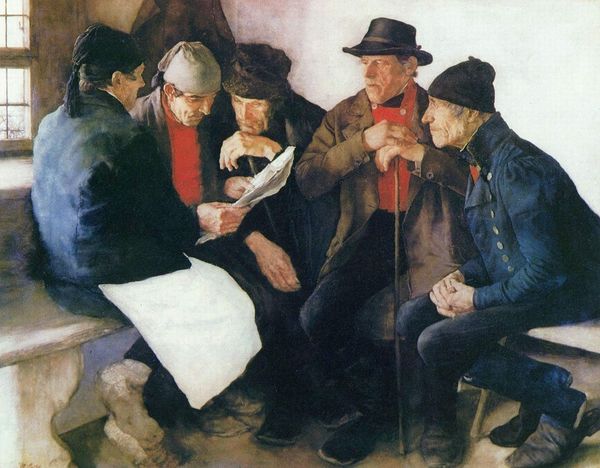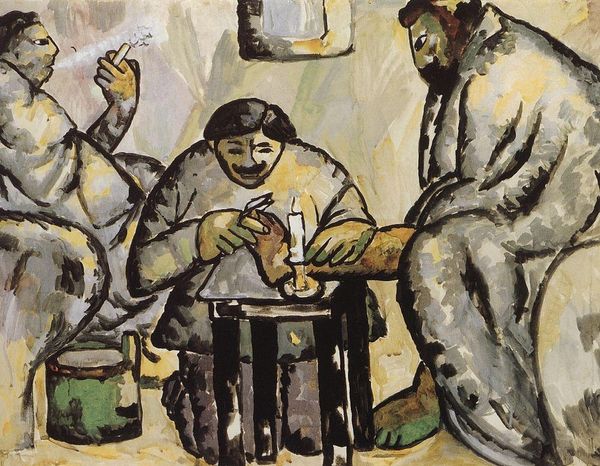
painting, oil-paint, impasto
#
painting
#
oil-paint
#
oil painting
#
impasto
#
portrait reference
#
group-portraits
#
genre-painting
#
post-impressionism
Copyright: Public Domain: Artvee
Editor: Here we have Paul Cézanne’s "The Card Players," painted sometime between 1890 and 1892. It’s an oil painting, and I find the stillness of the figures really striking, especially given the rough, almost textural brushstrokes. How do you interpret this work? Curator: The real drama lies in understanding its production. Cézanne, obsessed with rendering reality, labored meticulously over this seemingly simple genre scene. The materiality itself becomes a form of class analysis. Editor: Class analysis? Curator: Absolutely. Look closely at the clothes, the coarseness of the fabric rendered in thick impasto. It speaks to the working class, their dignity in labor, yet also the weight and limitations of their material conditions. Consider the painting not as a window onto a scene, but as a crafted object reflecting specific means of production. What tools and materials would Cézanne need to produce that effect? Editor: That makes sense. So the layers of paint almost become a metaphor for layers of societal structure. And thinking about it, he spent so much time observing these men. It’s not a fleeting Impression, it is about… Curator: It's about the slow, repetitive nature of labor and the quiet, everyday existence of these figures. Editor: That’s fascinating. I’d always focused on the composition, but the materials tell a whole other story. Curator: Exactly. Seeing art through a materialist lens really opens up a new understanding. We move beyond aesthetics and dive into the socio-economic factors shaping art production and reception.
Comments
No comments
Be the first to comment and join the conversation on the ultimate creative platform.

